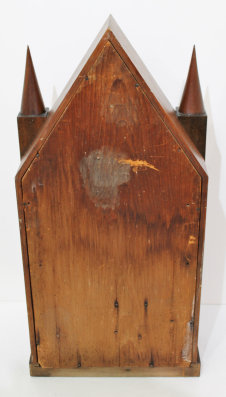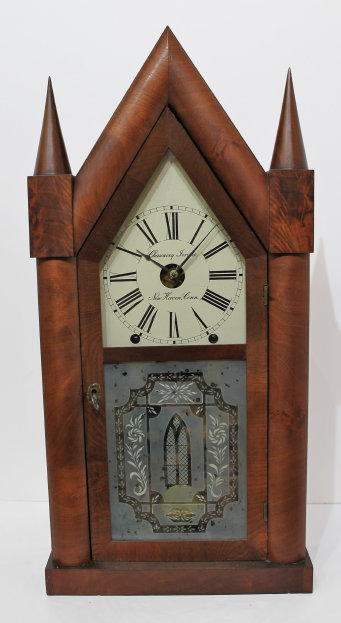
87. $500
Chauncey Jerome four-day oversized steeple,ca. 1845. A 22.5-inch steeple with good mahogany veneer and a clean finish. Both glasses are period and likely original;
the tablet is well-preserved. The dial is new and was painted by The Dial House; the hands are period/original. The signed
(Chauncey Jerome, New Haven, CT) movement has large brass springs and dust covers; it is running and striking on the wire gong. There is a good label behind plastic on the back wall. Why a four-day movement? I posed this question on the AAC Facebook
page and resident expert Jim DuBois explained that this was an early attempt by Jerome to produce an 8-day, spring-driven small shelf
clock. To make the clock affordable brass springs were used (steel springs were too expensive), but the current 8-day brass
springs were too wide to fit between the plates, so a narrower spring was used; this yielded only four days of power. Four-day
clocks never caught on, probably in part because you couldn’t set a weekly schedule to wind—winding day changed every week. Affordable steel springs soon made the issue moot, and very few 4-day steeples were manufactured; only a half-dozen or so of this
model are known to exist today. I can’t find a sale of a 4-day steeple on LiveAuctioneers or the Antique Clocks Identification
and Price Guide, but that may be because they weren’t listed as such. AAC sold one a year ago for only $175; afterwards several
collectors told me how much they regretted missing that clock. Don’t let that happen to you! $500–$1000.
Thanks to Jim
DuBois for helping me out!
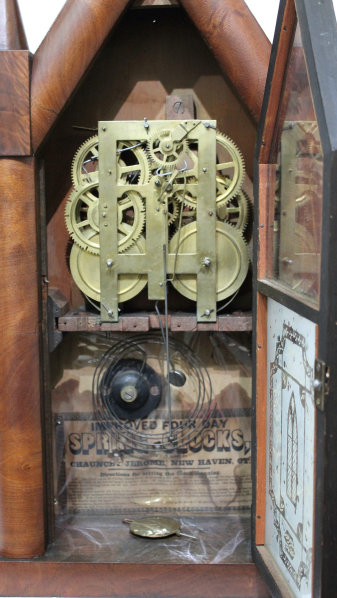
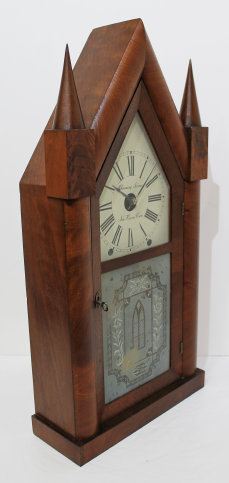
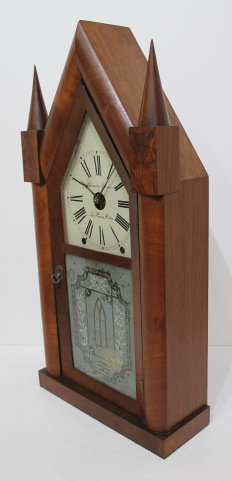

Antique American Clocks JULY 2023
